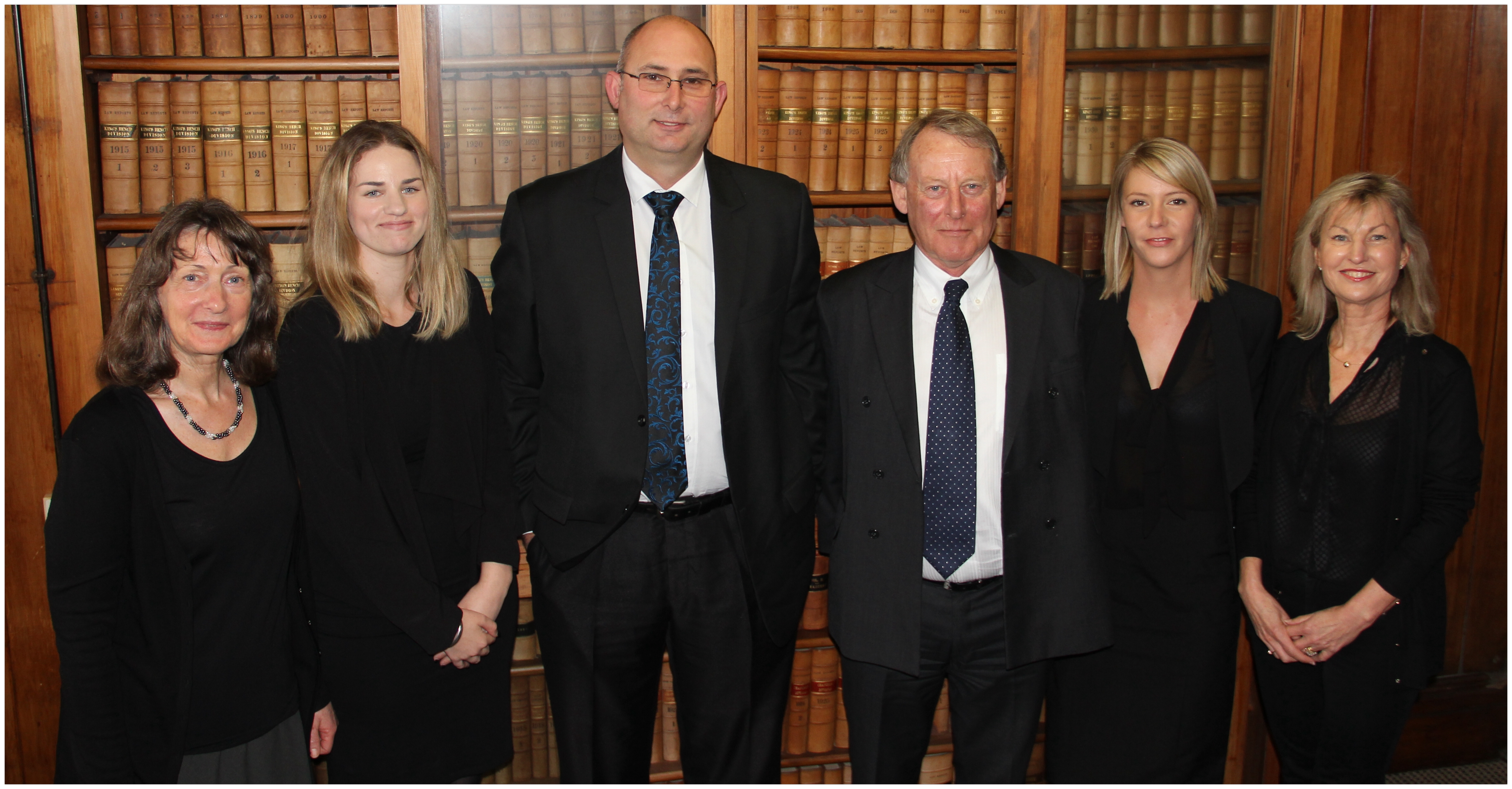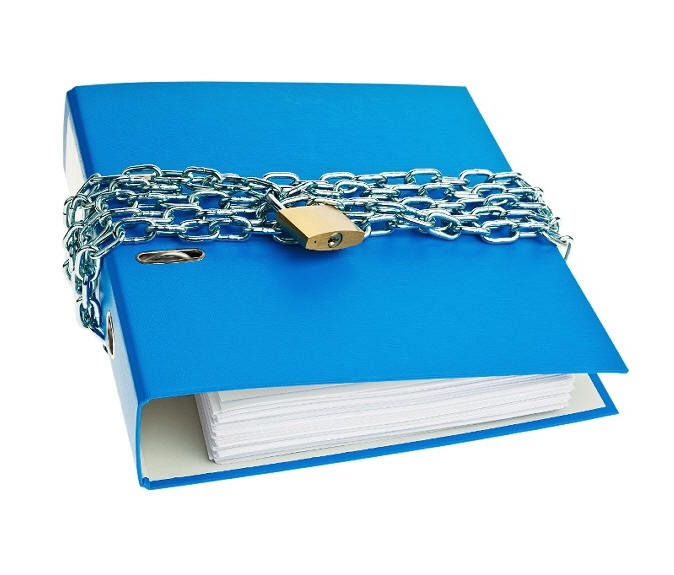|
|

|
|
|
|
The We have not provided staff update
details in the past as for the last 15 years we had not had any staff changes.

This year however Liz left us to travel
the world and Jo left to return to a nursing role, Paula left to expand her
areas of practice and we have been joined by Jacynda and Darren.
Jacynda fulfills the role left vacant by Jo and Darren joins us as a solicitor
having come from the Public Defenders Office. He covers criminal and traffic
law and is developing the family law and civil litigation areas within the
practice.
Eureka! Now What?
New Zealanders are master inventors.
What Kiwi inventors are not quite so good at is moving beyond the eureka
moment and into the next stages of the innovation cycle.
This article does not delve into the patent process. That is the domain of
patent attorneys. However, to move beyond eureka, an inventor needs to know:
* Who to speak to;
* Where to put scarce capital; and
* What the ultimate end points might be.
 Who
to speak to? Who
to speak to?
Speed to market is achieved through collaboration with the right advisers and
commercial partners. Finding these partners is simple enough after speaking
with a lawyer that specialises in technology and/or early stage
commercialisation, local innovation hubs or government agencies. Under the
veil of protection from a secrecy agreement, a discussion with a business
adviser might lead to investors, manufacturers, designers or potential
customers who may partner with you to source capital, knowledge and other
valuable resources.
Where to spend the money?
It is common for time and money to be spent on version 2, 3 or 4 of an
invention only to discover that a patent already exists in another part of the
world and the inventor will be stopped from selling the invention, or that a
big customer would have been happy to pay for the development work for
versions 2, 3 and 4 including a salary for the inventor.
Money is better spent (when it is scarce) on protecting the invention (or at
least confirming it is indeed new) and then talking to investors,
manufacturers, designers or potential customers about the invention to
establish what the market wants from versions 2, 3 and 4 and whether the
inventor needs to pay for it him/herself.
|
|
Inside this edition
Eureka! Now What?
Secrecy Agreements
What goes on in a property transaction?
The legal results of a market
decline
Brexit - A comparison with the NZ China FTA
Snippets
Net Migration
"Click Agree"
Agreements

Print version
Where will it end?
People who invent and develop products
for a living generally have a commercial and exit strategy in mind:
1. To operate a business selling the product (requires marketing, financial
and business nous) and take a wage from that business;
2. Sell the invention at an early stage and invent something else while the
buyer develops the invention and takes it to market (usually adopted by
inventors without the skill or desire to develop the invention further); or
3. Develop the invention to the market stage (such that it is ready to sell
and a market has been proven to exist) and then sell it or license it to a
third party to sell the product to customers (this is a common approach which
maximises gains to the inventor without requiring the inventor to have or
develop marketing, financial and business nous; though does require an ability
to collaborate and convince investors and partners to fund early stage
development).
How an inventor should manage their invention, what steps to take and what
advice to obtain will vary depending on which of the above three (albeit
broadly framed) approaches the inventor intends to take. Deciding on which
approach or learning more about what each approach actually entails is
critical.
Conclusion
The eureka moment is the most exhilarating step in the invention lifecycle,
but it is only the first critical step to getting the invention into the
market. Getting advice early will save money, speed up the process to market
and maximise the outcomes available to each inventor.
Top
|
|
|
|
|
|
|
|
The following mistakes are common with
secrecy agreements (otherwise known as confidentiality or non-disclosure
agreements):
1. The parties rely on a template off the internet; and
2. The secrecy agreement remains the only agreement in place past the initial
discussion stage.
Beware the template
Secrecy agreements are drafted with specific purposes, discussions and
circumstances in mind. In the first instance a secrecy agreement may place the
obligations of confidence on one party only or on both parties). If both
parties intend to share information, the agreement should be mutual. However,
if only one party intends to share information then the one-way agreement is
used.
The discussions may relate to intellectual property (including copyright,
patent rights, technical information and know how). Any intellectual property
that results from the discussions may, depending on the terms of the
agreement, belong to:
1. The discloser;
2. The recipient; or
3. The parties jointly.
Some templates omit reference to intellectual property entirely; this is
dangerous. The provisions dealing with ownership are critical and who owns
intellectual property will depend on the circumstances and purpose of the
disclosure. In any event, the discloser would be concerned to discover that
the recipient owned the intellectual property or might share ownership if he
or she was simply looking to have a preliminary discussion with the recipient
and nothing more.
|
|
Horses for courses
Relying on a secrecy agreement beyond the initial discussions is dangerous.
Secrecy agreements are only intended to cover the initial discussion. If the
discussion leads to a relationship (whether that is to develop an idea
further, invest, consult or purchase), that relationship needs to be governed
by an agreement that deals, amongst other matters, with what each party will
be doing with the secret information that was initially disclosed. For
instance, if the recipient of information is asked to invest in an idea, that
person will want to own or lay claim to intellectual property relating to the
idea. As such, while it would have been inappropriate to grant an interest in
the intellectual property at disclosure stage, it might become vital for
intellectual property to be jointly owned beyond the initial disclosure.
Unless the change in approach to intellectual property is recorded in a fresh
agreement, one party or the other risks losing their investment (in time or
money).
The hesitance to record the next stage of the relationship is understandable.
Relationships are fluid and evolve quickly. The discloser may be "selling" the
concept to the recipient and attempting to avoid roadblocks and in many cases
money is stretched, so the discloser will hope to avoid the cost of having an
agreement drafted.
However, some agreement, even an informal one, is better than nothing.
Conclusion
It is common to see an idea or business relationship not reach its potential
or for disputes to slow progress due to poorly drafted or ill-considered
secrecy agreements. As the first agreement to be signed between potential
partners, investors, consultants or investors, it is often the most vital.
Top
|
|
|
|
|
|
|
|
Many kiwis will, during their lifetimes
buy and sell property. Property transactions are not simple; nor should they
be. The importance and value of a property transaction alone necessitates a
degree of complexity and care.
However, the transaction and how it is completed is not well understood by the
general public. It may, therefore, be useful for property owners and potential
property owners to consider what the lawyers do in the background to complete
a sale, purchase or refinance.
Manager
A lawyer in a standard property transaction is the key-point of contact for
several parties to the transaction. The lawyers (for both sides of a sale) are
the "keepers" and enforcer of the contract, the negotiator, and an advisor.
Consequently, a lawyer manages the transaction by communicating with the key
participants in the transaction, including banks/lenders, Kiwi Saver scheme
and fund managers, real estate agents, Government agencies, local authorities,
mortgage and insurance brokers, tenants and property managers, body corporate
managers, valuers, surveyors, engineers and builders.
Informer
Behind the scenes, the lawyer obtains and collates all of the information
received by the various participants to the transaction and, if required,
informs the client of the critical points in each report, agreement or offer.
Key to the role as informer is to keep all participants, but crucially the
client, informed of key dates and deadlines in the transaction. Missing a date
or deadline can have significant financial and practical implications.
Adviser
A lawyer will advise the client on legal and other issues that arise in the
transaction. Advice may include raising issues with the legal elements of the
title to the land, problems with a Land Information Memorandum ("LIM"),
assisting the client to exit an agreement or providing options for handling
problems on the day of settlement.
In certain circumstances, the lawyer may also be asked to give advice on
structures for ownership of the property, relationship property considerations
and complexities around family trusts, guarantees, gifting and insurance.
|
|

Custodian and transactor
A lawyer must communicate with and meet the requirements of banks and other
lenders. For instance, the lawyer must give certain assurances to lenders
before they will advance money to complete the transaction. To give these
assurances, the lawyer must investigate, compliance with the lender’s
instructions and various laws. Unless such investigation is completed and the
bank/lender is comfortable, the funds will not be advanced and even when funds
are advanced, in most cases they will only be advanced to the lawyer, as
custodian, to use in buying the property.
The lawyer must ensure that the legal title to the property, the physical
ownership of the property and the funds themselves change hands in such a way
as the parties are protected. This process of settlement is carefully staged
so that the funds, securities (such as mortgages) and the property change
hands concurrently.
Once the lawyer has the necessary funds to complete the transaction or has
received those funds following a sale, the lawyer is required to pay those
funds to the correct person; be it the other lawyer, the bank/lender, secured
parties, real-estate agents or the client themselves.
Completion
Hopefully, after the lawyer plays its part, a buyer gets the land, the seller
gets some money, the bank gets a mortgage and all other participants in the
transaction get what they need without a hitch.
Top
|
|
|
|
|
|
|
|
When a market is in relative good
health, there is a good chance economists will be predicting a future decline.
In light of the current press on New Zealand’s economy, this article explores
some things that can happen, in a legal sense, during a market decline.
Insolvency
A person (including corporate persons and trusts) that is insolvent, put
simply, is a person that cannot pay debts as they fall due. The implications
of insolvency depend on whether that person is an individual, a company, a
trust or another type of entity. However, in all cases the risks to that
person's property/assets are much the same.
Creditors (parties to whom the insolvent person owes money) have certain
rights that crystallise upon the person’s insolvency, including:
1. A right to place the person, if an individual, into bankruptcy;
2. A right to place the person, if a company into receivership or liquidation;
and
3. A right to seek the return of sums paid by the person to other creditors or
third parties back to that person to pay the debt (or a portion of it).
The person that is insolvent is able to take steps to delay or stop the above
(and other steps) by creditors and it falls to the Courts to make orders that
the above steps are carried out. However, in a market decline where capital to
defend claims by creditors may be scarce it is often difficult for a person
that is being pursued by creditors to stave off the inevitable.

Bankruptcy
If a natural person is adjudicated bankrupt, their assets are placed under the
control of the Official Assignee. The Official Assignee is then able to use
those assets to pay that person’s debts. The insolvent person is restricted
from certain activities and roles and the effects of the bankruptcy survive
until the insolvent person applies for a discharge from bankruptcy.
In certain circumstances, sums that may have been paid or gifted by the
insolvent person to creditors, related parties or third parties may be clawed
back by the Official Assignee to be added to the pool of assets available to
satisfy debt.
Where the insolvent person has no realisable assets and the debts are less
than $47,000, the Official Assignee may take a step short of placing the
person into bankruptcy. The process involves using the "no asset procedure" in
the Insolvency Act 2006 which allows the person to resolve their short term
credit problems.
|
|
Receivership
Receivership is a process in which the assets of the insolvent company are
placed under the control of a receiver. The receiver then uses the assets of
that company and income that continues to be derived from the company's
business, to pay the debts and attempt to negotiate terms with the creditors
such that the company may trade out of insolvency. If the receivership is
successful, an application may be made to the Court to remove the company from
receivership. If the receivership is unsuccessful, the company may be placed
into liquidation.
Liquidation
In liquidation, the assets of the company are sold to pay debts and the
company is eventually removed from the register.
A company may, before receivership or liquidation is triggered, place itself
into voluntary administration to, hopefully, improve the outcome of the
insolvency to the company and its creditors. However, the process is
complicated and therefore still requires an administrator to be appointed and
relies on the creditors' cooperation. Advice should be taken before taking
steps to enter voluntary administration.
Eviction
If the insolvent person owes money to a landlord, to whom they are obligated
to pay rental, the landlord may (in addition to pursuing the debt):
1. In a commercial tenancy (for instance office or warehouse space) seek an
order from the Court to lock the tenant out of the premises and require the
tenant to remove its property.
2. In a residential tenancy, apply to the Tenancy Tribunal to terminate the
tenancy.
Both parties should take specialist advice on eviction and termination.

Mortgagee sales
Mortgagee sales are a common occurrence in a market decline. When entering
into a mortgage with a lender, the borrower agrees that money against which
the mortgage is secured, if they are unable to pay the interest and/or
principal, the holder of the mortgage security may sell the property to pay
off the loan.
Similar rights accrue to holders of other securities such as those that might
apply to cars and other personal assets.
Conclusion
Anyone experiencing credit problems or finding it difficult to pay debts as
they fall due should seek immediate advice so that early intervention is
possible and the best outcomes can be achieved for all involved.
Top |
|
|
|
|
|
|
|
Brexit is the name given to the UK’s
exit from the EU. What the Brexit, should it indeed proceed, means in a legal
sense is that the UK must trigger the termination provisions in its treaty
with the other nations within the EU (Treaty).
Article 50(2) of the Treaty states:
A Member State which decides to withdraw shall notify the European Council of
its intention. In the light of the guidelines provided by the European
Council, the Union shall negotiate and conclude an agreement with that State,
setting out the arrangements for its withdrawal, taking account of the
framework for its future relationship with the Union.
Article 50 is remarkably simplistic, and accordingly poses political,
legislative and market problems that the press believe will take months to
untangle. We will leave this untangling to the UK politicians and EU leaders,
and simply watch the effects in the international market from afar. However,
what would happen if New Zealand wished to exit from a significant
international relationship of its own?
Given the significant upside experienced
by New Zealanders following the trade deal with China, it is unlikely that New
Zealand would look to terminate that relationship. However, for the sake of
argument, we have considered how that process might play out.
The agreement with China is aptly
entitled, the Free Trade Agreement Between the Government of New Zealand and
the Government of the People's Republic of China; we shall call it NZFTA. The
NZFTA provides at Article 213(3):
This Agreement shall remain in force
until one Party gives written notice of its intention to terminate it, in
which case this Agreement shall terminate 180 days after the date of the
notice of termination.
The exit provision bears some similarities to Article 50 in that it is
likewise simplistic. However, while it is helpful to the leaver, it is not so
helpful; to the state wishing to remain. The notice period is short (180 days
will evaporate very quickly) and the lack of provision for consultation as to
the effects of the exit is potentially problematic.

In conclusion,
NZ is better placed (than the UK in the Brexit) in the
event of a termination under the NZFTA due to the nature of that agreement and
the terms of Article 213(3).
However, the terms of Article 50 might suggest that the drafters of the Treaty
never expected a state to unilaterally exit the EU and might be left pondering
how they may have drafted Article 50 had they considered the prospect of David
Cameron calling a referendum, the people of the UK voting to exit the EU and
the advent of a porcine flying school.
|
|
|
Consideration |
Brexit |
NZFTA |
|
Clarity |
Not clear: While simple, Article 50 does not cover certain
contingencies such as what will occur if the consultation process breaks
down and there is no agreement as to future relations between the UK and
the EU. |
Clearer: How termination is triggered, the timeframe and
consequences of termination are clear though how trade relationships
formed under the NZFTA might be continued is not clear. |
|
Certainty |
Uncertain: Until the exit agreement is negotiated, the
terms of the exit (as opposed to the fact of it) will remain a mystery.
This uncertainty will wreak havoc with international markets. |
Certain: Once triggered, Article 213(3) will take effect in
180 days. |
|
Timeframe for exit |
Medium: Two years will not be long enough to allow the
political machine in the UK to come to agreement with the other 26
countries in the EU. However, it is a longer period than granted to NZ or
China at Article 213(3) |
Short: If either state were to trigger Article 213(3) the
other would have no time to react and insulate against the effects of the
exit. However, as there is no requirement to consult, the timeframe will
not itself place pressure on the two states to negotiate terms for the
exit. |
|
Requirement for consultation |
High: Effectively, the UK must consult extensively, through
the negotiation of the exit agreement, with the EU. |
Nil: Article 213(3) requires no consultation. However, as
the NZFTA is not a treaty with the same wide reaching and critical effects
(it deals predominantly with ease of trade), consultation is not as
critical. It will fall to the individual states to resolve the effects of
an exit internally and manage a reversion back to trade relations pre
NZFTA. |
|
Legislative impact |
High: Due to the nature of the Treaty more so than Article
50, the Brexit will require legislative change. The UK has, since 1973,
implemented a number of EU edicts into UK law and now needs to determine
which of these should remain part of UK law and which should be repealed
or varied. |
Medium: As a function of adopting the NZFTA, New Zealand
has varied and enacted legislation. However, the NZFTA relates
predominantly to trade relationships and so the legislative impact of an
exit from the NZFTA will be limited to a smaller (than in the Brexit)
number of statutes. Also, the NZFTA is a relatively recent agreement and
is not so woven into our legislative framework as is the case with the
Treaty in the UK. |
|
Fairness |
Fair: It is fair that a unilateral decision to exit places
requirements on the exiter to permit the other party or parties to contend
with the implications of that decision. This is particularly true in a
relationship such as that recorded in the Treaty, where the nations to
that Treaty have relied on each other and their respective good faith in
entering the agreement. |
Fair: in the context of a trade relationship, the short
notice period, lack of consultation and simplicity of the exit provision
does not unfairly disadvantage one party over another. The exiter will be
in much the same position as the other party and the cards will lie where
they fall; though if the NZFTA ever evolved into a wider treaty, more time
and more consequences on the exiter might be appropriate. |
Top
|
|
|
|
|
|
|
|
Net Migration
Recently, New Zealand has witnessed record high net migration. In the May 2016
year, 68,400 non-New Zealand citizens have migrated to New Zealand.
Unsurprisingly, therefore, the media has been filled with reports on net
migration and its effects on New Zealand’s economy; in particular, the
coincidental rise in house prices.
Net migration is a calculation of the balance between people moving to a
country for more than one year (“immigrants”), and people leaving the country
(“emigrants”), over a twelve-month period. Undoubtedly, social, economic and
fiscal effects result from fluctuations in migration; however the degree of
benefit to a country remains a contentious matter. In respect of the housing
market, recent studies have shown a strong correlation between net gain and
house price inflation.
Essentially, the correlation between net migration and property values is
attributed to an imbalance in supply and demand. Similar studies focused on
the housing market, determined migration flow quantified at one percent of the
population, is associated with an eight to twelve percent change in house
prices after a year.
We appear to be experiencing
that correlation in New Zealand, as in the May 2016 year, New Zealand property
values grew by around thirteen percent.
|
|
"Click
Agree" Agreements
Do you have Facebook or a smart phone or have you brought goods or services
online? If so, then you have likely entered into an enforceable contract; all
with the simple click of your mouse or swipe of your finger.
The past decade has posed enormous changes to consumerism including the way we
trade and carry-out our business online, even more so with the advent of
smartphones, online shopping and social media. Consumers must ensure their
understanding of the content and enforceability of ”Click Agreements.”
Click Agreements include warranties, exclusions and disclaimers of liability,
intellectual property ownership, and the relevant governing law.

The enforceability of Click Agreements
is yet to be tested in New Zealand courts. However, it has been established
and widely accepted overseas that the traditional principles of contract law
apply and if ever tested here, the outcome will likely be the same.
Critically, there must be an express record of acceptance by the consumer, as
part of the transaction process; hence the requirement to “click agree.
Top
|
|
|
|
If you have any questions about the newsletter items,
please contact me, I am here to help.
Simon
Scannell
S J
Scannell & Co - 122
Queen Street East, Hastings
4122
Phone:
(06) 876 6699 Fax: (06) 876 4114 Email:
simon@scannelllaw.co.nz
All
information in this newsletter is to the best of the authors' knowledge true
and accurate. No
liability is assumed by the authors, or publishers, for any losses suffered
by any person relying directly or indirectly upon this newsletter. It
is recommended that clients should consult S J Scannell & Co before
acting upon this information.

Click here to subscribe to this newsletter
|
|

 Who
to speak to?
Who
to speak to?




